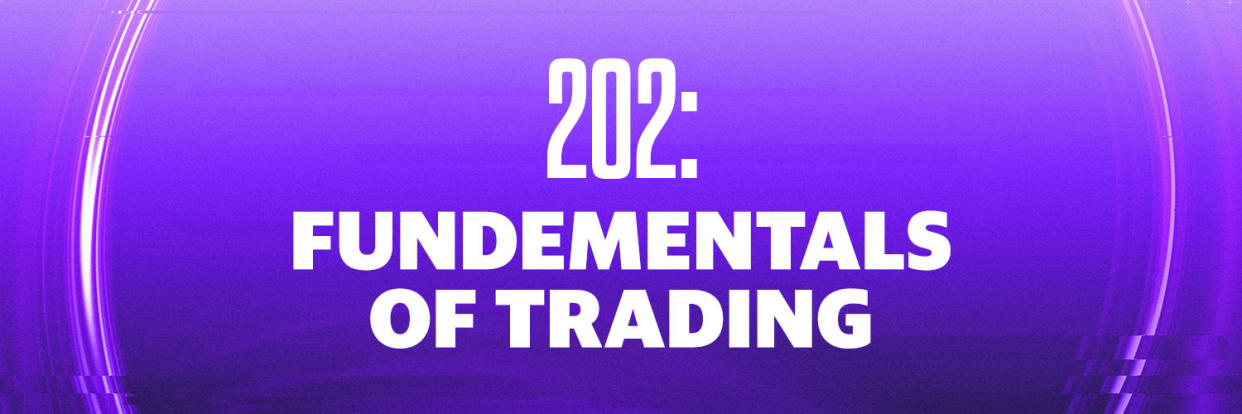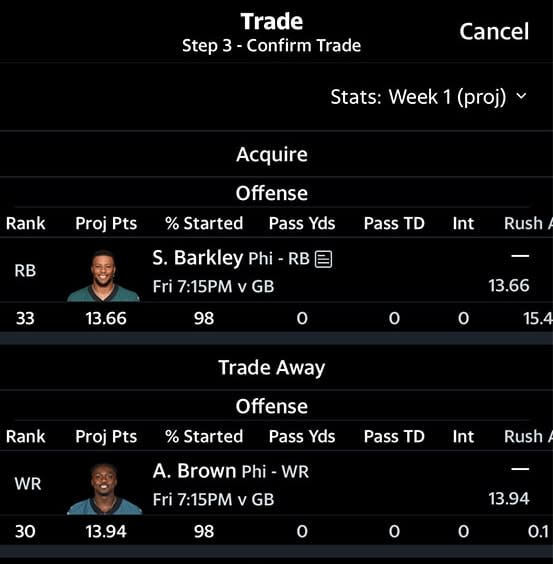Fantasy University: Course 202 — The art of trading in fantasy football
Fantasy Football draft day is the most important time of the season, and your weekly waiver work (adding and dropping players) is also critical to fantasy success. But there's another way to shape and upgrade your roster; in most fantasy leagues, you are able to make trades with your opposing managers.

How trading works in fantasy football
Your goals in a fantasy trade are usually basic and obvious — you're looking to add talent to your roster, or perhaps adjust your roster in a more balanced or playable shape. But sometimes you might want to make a trade as an emotional pick-me-up — perhaps you just want some fresh blood on your team, or you want to target a favorite player of yours. So long as you're not ignoring the reasonable values of the players involved in your trade, I don't see a problem with making a deal that has tinges of emotion tied to the process.
Trading styles will vary greatly from manager to manager. Some managers like to send out bunches of offers with little explanation. Others think if they constantly offer lowball trade pitches, eventually some unwitting opponent might say yes to one of them. If those techniques have worked for you in the past you're welcome to continue with them.
However, it's long been my contention that a successful trader should look to establish a friendly relationship with the other manager, with the idea that the current trade being worked on is going to be the first of many you'll make together. If you're always seeking to ambush opponents, you'll probably burn bridges and maybe even acquire an unsavory reputation around your league.
Your first order of business is to audit your roster; be frank about your fantasy team's strengths and weaknesses. Then, it's time to look for an opponent who has contrasting needs to your own. Maybe your running back room is deep but your receiver room needs upgrading. If you can identify an opponent with strong receivers and weak running backs, you might find a winning trade partner. Generally, it's easier to complete a trade when both managers are moving players from positions of strong depth; it's less likely to finalize a "challenge trade" where the players play the same position.

If you're looking for help identifying top trade partners, Yahoo has a premium tool that includes data-driven insights into every team in your league.
My best trading success usually comes when I include a pitch that's reasonable but to the point. Identify why the deal could be a win-win for both sides. If you assemble a long or complicated argument tied to your trade offer, you run the risk of getting thrown into the "too long, didn't read" folder. Brevity is usually your friend in these negotiations.
It's a commonly held belief that you want to acquire the best player in a multi-player deal if at all possible, but there are outlier situations where that maxim doesn't hold true. If you find your roster riddled with injury, it might make sense to package your most attractive star for several players who would immediately become weekly starters for you. If you find yourself in this position, make sure your entire league knows your superstar is on the trading block. You want options.
Everyone has a personal preference for the ideal method of communication when negotiating a trade. Although I start most of my trade discussions through inter-league messaging or Yahoo's chat function, those deals often get closed through a more personal touch. It's all about learning the personality of your trading partner.
Sometimes it's a good idea not to identify the player you're looking to move or eager to acquire. Let's say I view a receiver as a good buy-low candidate. I won't go to his manager and mention that player by name. I'll try to start a line of communication about their roster — and maybe their receiver depth — and hope we come to my targeted player organically. This same theme works when you're looking to shed a player; don't disclose that information upfront.
Even when you're looking to go through the trading process in a friendly and collaborative way, it still makes sense to play a little poker — keep your cards close to the vest.
Our next course sticks with the strategy theme. Now that you've learned some of the basics of playing fantasy, it's time to give you some tips on nailing your draft.
Next class ⏩️ 301: Guide to a successful draft
Previous class ⏪️ 201: Working the waiver wire


